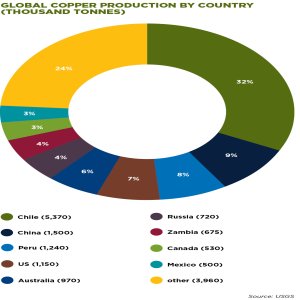Adapting the Legal Framework to Pursue Sustainability

STORY INLINE POST
Q: As a Member of Congress and President of its Environmental and Natural Resources Commission, what areas are your priorities during this legislative term?
A: Laws can be improved and this has to be done according to the current situation in Mexico. For example, there are laws that have been left untouched for years and are not in line with what is happening in the country today. The General Law of Ecological Equilibrium and Protection of the Environment (LGEEPA) is 25 years old and may still be considered a young law, but the matter it applies to is very dynamic and constantly evolving, and, is becoming insufficient for the country’s reality. It requires an update that involves the private sector, NGOs, and the academic sector. LGEEPA needs to be revised and updated, especially to reconcile it with the General Law of Climate Change and the General Law of Environmental Responsibility. At the same time, we have to work towards legislative alignment.
Q: How does the current legal framework influence strategic decision making regarding environmental impact in the private sector?
A: For a long time, there has been a ‘do not touch anything’ policy in place in Mexico. Part of the current legal framework is focused on tightening the law for those that do not comply with it. Profepa has implemented programs such as the Clean Industry Certification, which fosters social responsibility in companies. However, efforts are currently focused on tightening sanctions rather than encouraging companies to comply with social and environmental responsibility guidelines. The main issue is that there are no fiscal incentives for environmentally responsible companies. It is important to devise and implement incentive schemes, but even in their absence many companies are improving their environmental practices because they believe in the cause. Many Mexican and foreign companies follow sustainable practices, and they can serve as examples for those companies that do not break the law but do not strive for better environmental practices, either. We need to evaluate the best practices of the most sustainable companies, and take the required measures to ensure that the rest of the mining industry emulates those practices.
Q: How would you describe the challenges that the mining industry faces regarding the LGEEPA?
A: The LGEEPA is very superficial regarding the mining industry. Article 28 of the LGEEPA deals with the Environmental Impact Assesment (MIA), but I believe there are still many holes in the authorization process. For starters, the Economy Ministry is in charge of the whole permitting process and not the Ministry of the Environment and Natural Resources (Semarnat). Both ministries have different visions and goals, and there has to be better coordination between these two institutions. Transforming any industry into a clean industry requires a lot of investment and implies higher production costs. Not all companies are willing to lower their earnings for the good of the environment. Nevertheless, fiscal incentives and new technology may allow the mining industry to become more sustainable, without having to rely only on sanctions.
Q: How will the new Environmental Responsibility Law impact the mining industry?
A: The Environmental Responsibility Law operates according to the ‘polluter pays’ principle. Beyond the administrative procedure, sanctions, and fines, a company will also be responsible for repairing the ecological damage it has caused. In many cases the damage to the environment is the most expensive part. This is a good way to foster restoration activities, which is something that is rarely done in Mexico.
Q: Do you think the 5% royalty tax will bring environmental benefits?
A: I consider the 5% royalty to be a “fake door”. I think the previous scheme, in which each state had the liberty to establish its own mechanism, was more successful. Nevertheless, we will be working so that part of the royalty is allocated to environmental restoration, conservation activities and natural resources protection. Mining operations cause wildlife displacement, soil erosion in the case of open pit mining, and water pollution. It would be fruitful if parts of this tax were to be allocated to studies that might provide the industries in Mexico with environmental solutions. I believe this could be a good way to move environmental restoration onto the agenda of Mexico’s different industries.





















